In this article, we will discuss the difference between petrol and diesel engine. The classification of the petrol and diesel engines is done on the basis of the respective fuel used by these engines. An engine which uses petrol is called a petrol engine while one that uses diesel is called a diesel engine. The petrol engine is also called a Spark Ignition engine(SI Engine) and the diesel engine is called a Compression Ignition engine. Here will discuss all the major differences between these engines.
Difference Between Petrol and Diesel Engine
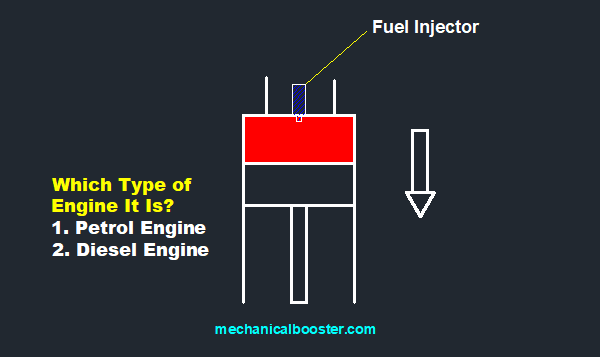
What is a Petrol Engine?
An internal combustion engine that works on petrol fuel is called a petrol engine. It works on the principle of the Otto cycle. In the petrol engine, a carburetor is used to make air petrol mixture that will enter into the cylinder. The Flashpoint (−43 °C (−45 °F)) of petrol is low and due to this, it can ignite at low temperatures which results in a low compression ratio. The power obtained from the petrol engine is less as compared with the diesel engine.
How Petrol Engine Work?
The air-fuel (Petrol) mixes with each other in the carburetor and it is sprayed into the cylinder through the inlet valve. Since it works on Otto cycle so it has four-stroke (suction, compression, power and exhaust stroke). At the end of the compression stroke spark plug at the head of the cylinder ignites the fuel and combustion starts. This produces a very huge amount of thrust on the piston head and forces it downward. After that, the piston moves upward that forces the burnt gases out of the cylinder through the exhaust valve.
A Petrol engine may be of two-stroke or four-stroke type. But four-stroke engine is most commonly used because of its better efficiency.
Let’s understand the working of the four-stroke petrol engine.
- Suction Stroke: The piston moves downward and the air petrol mixture enters into the cylinder.
- Compression Stroke: The piston moves upward and compresses the air-petrol mixtures.
- Power Stroke: At the end of the compression stroke, the spark plug ignites the fuel and starts the combustion process. A high thrust generated that moves the piston downward and called a power stroke.
- Exhaust Stroke: After the power stroke, the piston moves upward that allows the burnt gases to escapes out of the engine through exhaust Valve.
Note: Here we get power only in the power stroke and the rest of the strokes work from the power stored in the flywheel.
What is a Diesel Engine?
An internal combustion engine that works on diesel fuel is called a diesel engine. It works on the principle of the Diesel cycle. In this engine, we have fuel injector for the injection of diesel into the cylinder. The air-fuel mixture is not prepared in diesel engines but the air and fuel enter into the cylinder separately.
Since the flash point (>52 °C (126 °F)) of the diesel engine is high and as a result of that, it has a high compression ratio. No spark plug is used in this for the combustion of diesel. The heat of the air is used to ignite the diesel sprayed in the form of mist by the fuel injector. The power produced by a diesel engine is very high as compared with the petrol engine.
How does a Diesel Engine work?
The diesel engine is of four-stroke type in which we have four strokes: Suction, compression, power and exhaust stroke. Let’s understand its working…
- Suction Stroke: The piston moves downward and sucks the atmospheric air into the cylinder.
- Compression Stroke: The piston moves upward and compresses the air and increases its temperature above the flash point of the diesel fuel.
- Power Stroke: As the piston approaches at the end of the compression stroke, the fuel injector injects the diesel fuel in the form of mist and the heat of compressed air ignites the diesel and combustion starts. A very high thrust force is produced due to the burning of the diesel fuel and it moves the piston downward at a very high speed. This is called a power stroke.
- Exhaust Stroke: The piston moves upward and the burnt gases escape out of the cylinder through the exhaust valve.
Also Read:
- How Anti-lock Braking System (ABS) Works
- Torque Converter Working, Principle, Main Parts and Application.
- What is Stirling Engine – Types, Main Parts, Working and Application?
Difference Between Petrol and Diesel Engines in Tabular Form
| S.No | Petrol Engine | Diesel Engine |
| 1. | The petrol engine works on Otto cycle i.e. on constant volume. | The diesel engine works on diesel cycle i.e. on constant pressure. |
| 2. | The air and petrol are mixed in the carburetor before they enter into the cylinder. | The fuel is fed into the cylinder by a fuel injector and is mixed with hot compressed air inside the cylinder. |
| 3. | The petrol engine compresses a mixture of air and petrol which is ignited by an electric spark. | The diesel engine compresses only a charge of air and ignition is done by the heat of compression. |
| 4. | Due to a higher compression ratio more power is produced. | The compression ratio is higher in a diesel engine. 18:1 to 23:1. |
| 5. | Less power is produced due to the lower compression ratio. | They are used in light vehicles which require less power. Eg: car, jeep, motorcycle, scooters etc. |
| 6. | The petrol engine is fitted with a spark plug | It is fitted with a fuel injector. |
| 7. | Burns fuel that has high volatility. | Burns fuel that has low volatility. |
| 8. | The petrol engine requires frequent overhauling. | They are used in heavy vehicles which require high power. Eg: bushes, trucks, locomotive etc. |
| 9. | Fuel consumption in a petrol engine is high. | Fuel consumption in a diesel engine is less. |
| 10. | Lighter in weight. | Heavier in weight. |
| 11. | Petrol engine requires frequent overhauling. | Overhauling of a diesel engine is done after a long time. |
| 12. | Lesser starting problem. | Greater starting problem. |
| 13. | Lower initial cost. | Higher initial cost. |
| 14. | Lower maintenance cost. | Higher maintenance cost. |
For a Better Understanding of Petrol Engines vs Diesel engines, Watch the Video
we have discussed the difference between petrol and diesel engine in detail. If you found this piece of information correct then don’t forget to like and share it.

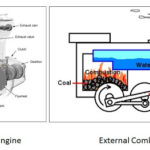
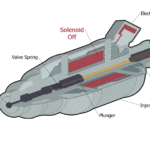
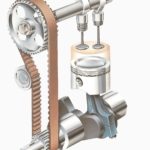
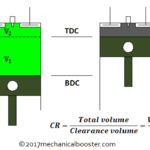

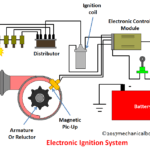



People use more of petrol engines but the power developed is more and the consumption of fuel is also less in diesel engines.then why do people prefer petrol engines?